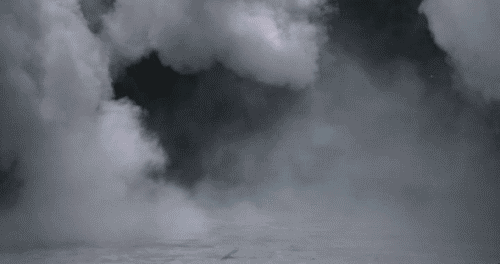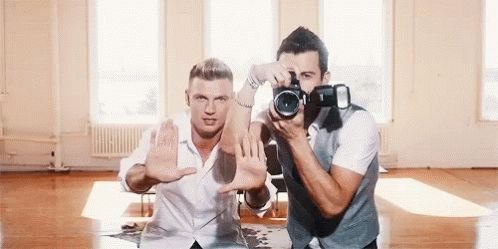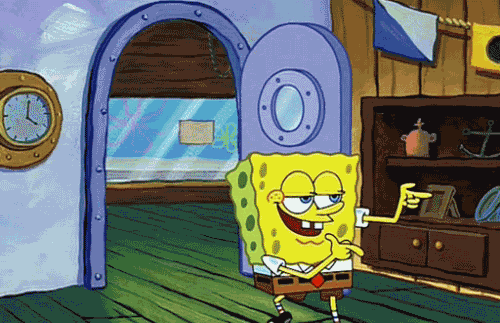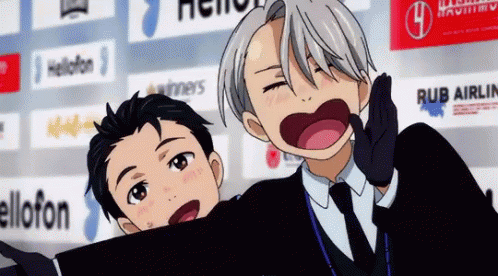by Matt Hughes & Trevor Stobbe
Hello everyone, Matt here!
There’s so much I could talk about, though, today I’m going to focus on one of the technical challenges we had with this shoot and we how solved for it. As Trevor and Bethany said, we had a clear goal with what we wanted:
We’d have multiple angles/ be more traditional band-performance music video:
– Have a concert feel (lights, smoke, lasers).
– Be respectful of and use the original Clock Strikes video as inspiration.
Plus, this awesome filming space had LOTS of windows and was all white. Lots of windows gave us lots of natural lighting, which is usually great. For this shoot though, this natural lighting wouldn’t give us the vibe we were after. The all-white-room also meant any light would reflect, making the room very bright (why we had to wait for sunset). The benefit of all the white though was it reflected the lasers and lights sort of like a cyc screen in stage theatre.
Because of all this, we knew we had to wait until after sunset (meant lots of Redbull and coffee) and that our biggest challenge would be low-light. How did we solve this? Before the shoot, once we’d decided on our direction, my first step was YouTube. YouTube is amazing. Since we’re learning everything ourselves, it’s been a great resource for me. I like to see what other people have learned and if I can apply it for our shoots.

Dealing with Low Lighting
As I said, for this shoot, we knew we needed a low-light space to get the right vibe. If you’ve ever taken a photo after sundown, you know, it’s really tricky to get good shots. There’s not enough light to get clear detail. To compensate, either the flash gets involved (which often ruins the image by adding too much direct light right on the subject) or the shutter has to stay open for longer to let in more light.
Generally, when the shutter stays open too long in low-light, your shot looks really grainy/noisy (you can see pixels, it’s not crisp, etc). This is especially an issue for filming because we film 24fps (frames per second, like cinema cameras). To record for this, my shutter speed is set to double my fps (1/48s). This means in more normal conditions (like My Affliction) the shutter is open quite long. For this shoot, there was the potential to look absolutely terrible.
And then there’s the fog…

The fog was another layer of complexity (other than setting off the smoke-detector). We needed it fairly thick so the lasers would show up. Knowing low-light had the potential for our image to be grainy, I was worried that if we weren’t careful, combined with all the fog, our footage might be unusable! This was where my research showed me the coolest “hack”: Have your fog-machine dispense directly into a small fan. The fan blades help break up the fog and stop it from clumping, dispersing it more evenly around the scene. This is how we got that cool hazy, textured look.
The advice from YouTube was to use the light sources available as best we can (for us, our lasers, but this could be anything from neon signs, to street lamps, or the flashlight on your phone if you were to try it at home). Accept that your image will have shadows, and lean into that contrast.
The Photo Shoot
Once it was dark and we had our scene, even though we expected there to be shadows, everyone was still too dark to be seen (not even Wade’s charm cut through). The lasers didn’t light everyone up enough. Not really what you want from a photoshoot.
Fortunately, we’d thought to bring a soft-light ring. The light-ring is meant to light up a subject without adding much shadow. Using it was perfect, everyone looked gorgeous and clear, and it didn’t kill our vibe.

The Video Shoot & Technicalities
For the photoshoot, we want everything crisp. In low-light, slow shutter allows more light in to compensate and can get super noisy and distorted. Also, if everyone isn’t perfectly still, we can can get motion blur (not great if that’s not what we’re going for). We added light so we could reduce shutter speed and get crisper images.
For video we did the opposite. We ditched the soft-light ring and actually had to remove light. “That’s weird! For photos, it was too dark, you needed to add light. Why is it now too light for filming?” Remember all that chat about longer shutter speed? We needed the shutter slower. We’re capturing movement, we want some motion blur so it looks realistic.
Light, lights, all the lights
Since lots of light was being let in naturally, plus the extra light in the image from the light ring, the shot looked too bright and we were loosing the vibe. So, we channeled our inner Dark Knight Rises Batman and adopted the darkness.
To further control the light in the shot, I also used a Variable ND (Neutral Density) filter (think “Sunglasses for your camera”). This is a lens put over top of your camera lens that controls the amount of light able to pass through it. The variable part means I can adjust the amount of light within a range.
The last major thing we did is shoot in LOG colour profile.
What this does is flattens the contrast of our recording so we can adjust the colours in the editing process. We want this so we can choose how the colours will look rather than how the camera’s default mode thinks they should look.
All ends well
Hopefully, you enjoyed the video and this behind the scenes peek on some of what went into filming. We’ve learned so much from both Clock Strikes and My Affliction, getting better and better each time. Like I said, there’s more I could say, but that can be for another time.
Back to the band!

Everything comes together in the Edit
Oh hey, it’s Trev, and I’m back to give a brief overview of how we edited the video.
Back when I was in college for graphic design I actually had taken some video editing courses which have really helped us out a lot. Definitely a skill I recommend everyone know the basics of!
I initially watched the original “Clock Strikes” video and started counting how many cuts they had in each part/also taking note of when they cut and that sort of thing. It gave me an idea of how I should be doing it to keep the same style/momentum to the video. We wanted it to be the same kind of fast-paced cutting you’d see in a traditional music video. MAN, you don’t realize how many camera cuts there are in these things 🎬.
CUT, CUT, CUT!
By the end of the first verse I think we were OVER 30 CUTS and it just kept going. The cool thing is that since we had a lot of different takes to cut between. As I was moving things around the video almost started editing itself. I’d move something over to make room for a cut and suddenly the thing I moved over was instantly perfect for the following cut. It was MAGIC 🕴🏻
Anyways, I won’t bore you with any more details. There is only so much that you can say about editing a video together. Once I had an edit I was happy with, I showed the guys to make sure they were happy and all was right with the world. We have someone who helps us out with color grading our music videos so we sent it off to him and BAM 💥 video complete! 🙌🏻
That is how the making of our “Clock Strikes” music video came together 🎥
すごい!ご精読ありがとうございます。(Amazing! Thank you for reading!)

